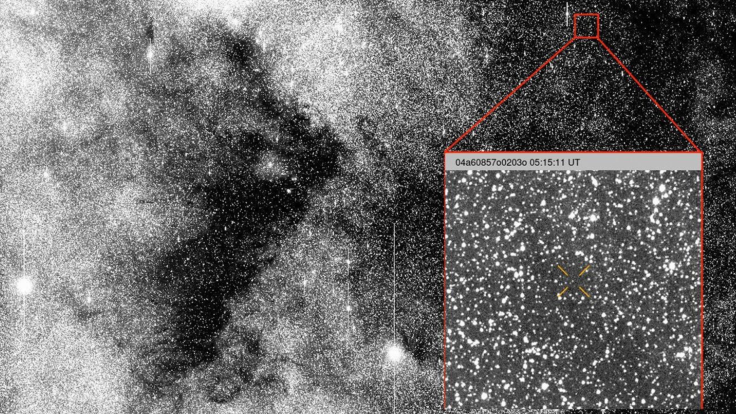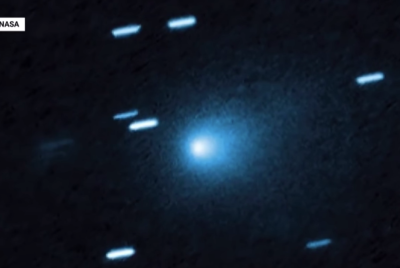Interstellar Comet 3I/ATLAS 'Not As Pure As Thought,' Baffling Astronomers
Interstellar comet 3I/ATLAS baffles scientists. It's 'not pure' and has a thick, irradiated crust from cosmic rays, explaining its extreme CO2 levels.

It travelled for millions of years, a lonely wanderer sailing through the harsh, empty void between the stars. Now, it has arrived in our cosmic neighbourhood, and it is putting on a show.
The interstellar comet 3I/ATLAS (C/2025 N1) is not just another speck of light. It is a true outsider, a visitor from an entirely different solar system. And new images captured of its journey are revealing something mysterious: this ancient traveller is not what we expected. It is not a clean, pristine relic.
It is a battered, weathered survivor, estimated to be as old as 7 billion years, and it carries the scars of its epic journey.

A Ghostly Message from the 3I/ATLAS Comet
On 10 November 2025, astronomers with Italy's Virtual Telescope Project pointed their instruments low toward the eastern horizon. Their target was faint, distant, and partially obscured by the glow of a bright moon. Yet, they captured it.
By combining fourteen long-exposure shots, they managed to reveal the comet's faint, ghostly light. The image shows 3I/ATLAS shining with a clear, steady glow, a 'message from deep space' that managed to cut through the moonlight.
This technical achievement gives us one of our clearest looks yet at the object that has ignited both scientific and public imagination. But it is what this light tells us that has astronomers talking.

Why 3I/ATLAS Is Not a 'Pure' Visitor
What makes this comet so unusual? When we first spot an interstellar visitor, the hope is that it is a 'pure' sample, a perfectly frozen and preserved piece of its home star system. This would allow us to study the building blocks of another part of the galaxy.
But astronomers say 3I/ATLAS may not be pure at all. New research, combining data from the James Webb Space Telescope (JWST) with computer simulations, has baffled scientists. Its surface shows distinct signs of 'cosmic radiation damage.'
This means that during its long voyage, it has been relentlessly blasted by countless years of exposure to harsh galactic cosmic rays, high-energy particles that are flung through space from distant supernovae and other violent cosmic events.
This constant bombardment has altered the comet. It has been reshaped, its original surface chemistry changed and perhaps darkened by the unforgiving environment of interstellar space. Specifically, this radiation is believed to have formed a thick, 'irradiated crust' up to 65 feet (20 metres) deep.
This process converted original carbon monoxide (CO) into carbon dioxide (CO2), which explains why JWST detected an 'extreme' and bafflingly high CO2-to-water ratio.
🚨 Something Strange Is Happening with 3I/ATLAS... 🚨
— Astronomy Vibes (@AstronomyVibes) November 10, 2025
A new image from Italy’s Virtual Telescope Project has captured something truly mysterious — the interstellar comet 3I/ATLAS (C/2025 N1) glowing in the dark sky. This cosmic traveler isn’t just another comet. It came from… pic.twitter.com/ePIJ2ZZFsQ
What a Damaged 3I/ATLAS Reveals About the Void
This discovery is not a disappointment; it is a fascinating new chapter. It represents a 'paradigm shift' for astronomers. It means we might not be looking at the original form of the comet, but rather at something that has been fundamentally changed by time and the universe itself.
The gases we see it shedding are not from its 'pristine interior' but from this processed, damaged crust.
This 'damage' is a scientific record. The comet is not just a messenger from a distant star; it is a messenger that has recorded the history of its entire journey. The scars it carries tell us about the 'empty' space between the stars.
By studying its altered surface, scientists can learn more about the radiation levels and conditions in the interstellar void, a place we have only just begun to probe with our own spacecraft.
Could 3I/ATLAS be hiding secrets about what lies in the dark expanse between star systems? Or is it simply showing us how strange and unpredictable these interstellar visitors truly are? One thing is clear: 3I/ATLAS is not just a comet. It is a history book, and we are just learning how to read it.
The revelation that 3I/ATLAS is not a 'pure' visitor but a battered, 7-billion-year-old survivor represents a 'paradigm shift' for astronomers. The comet we see is a 'history book', its 'irradiated crust' telling the story of its long, harsh journey through the void.
This discovery finally explains the bafflingly high CO2 levels, but it also means the comet's pristine core remains a hidden secret.
© Copyright IBTimes 2025. All rights reserved.





















